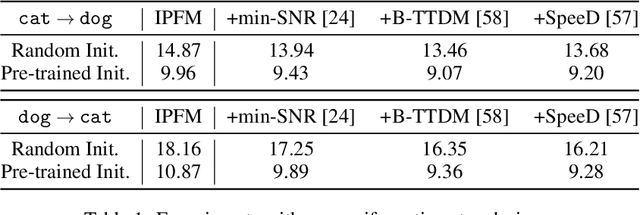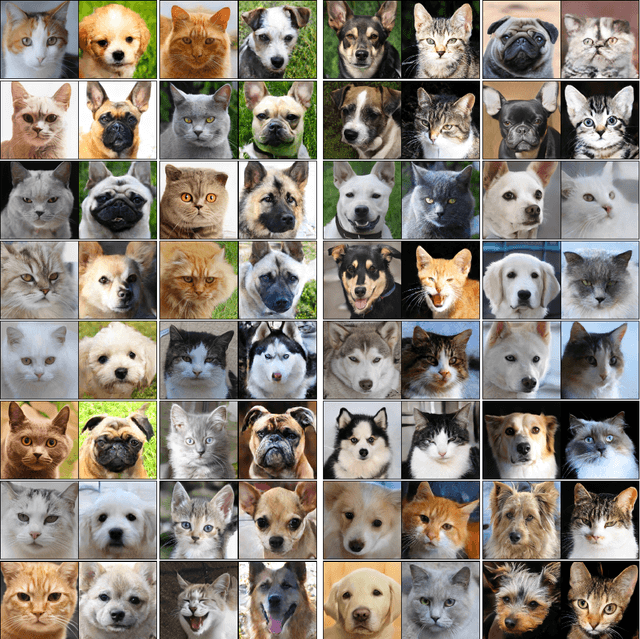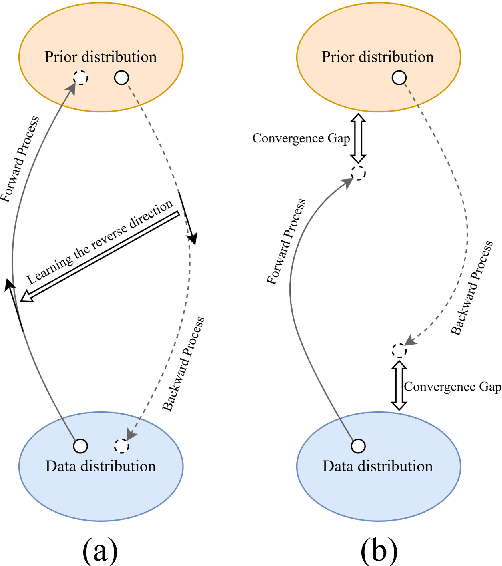Baining Guo
LoLA: Long Horizon Latent Action Learning for General Robot Manipulation
Dec 23, 2025Abstract:The capability of performing long-horizon, language-guided robotic manipulation tasks critically relies on leveraging historical information and generating coherent action sequences. However, such capabilities are often overlooked by existing Vision-Language-Action (VLA) models. To solve this challenge, we propose LoLA (Long Horizon Latent Action Learning), a framework designed for robot manipulation that integrates long-term multi-view observations and robot proprioception to enable multi-step reasoning and action generation. We first employ Vision-Language Models to encode rich contextual features from historical sequences and multi-view observations. We further introduces a key module, State-Aware Latent Re-representation, which transforms visual inputs and language commands into actionable robot motion space. Unlike existing VLA approaches that merely concatenate robot proprioception (e.g., joint angles) with VL embeddings, this module leverages such robot states to explicitly ground VL representations in physical scale through a learnable "embodiment-anchored" latent space. We trained LoLA on diverse robotic pre-training datasets and conducted extensive evaluations on simulation benchmarks (SIMPLER and LIBERO), as well as two real-world tasks on Franka and Bi-Manual Aloha robots. Results show that LoLA significantly outperforms prior state-of-the-art methods (e.g., pi0), particularly in long-horizon manipulation tasks.
VASA-3D: Lifelike Audio-Driven Gaussian Head Avatars from a Single Image
Dec 16, 2025Abstract:We propose VASA-3D, an audio-driven, single-shot 3D head avatar generator. This research tackles two major challenges: capturing the subtle expression details present in real human faces, and reconstructing an intricate 3D head avatar from a single portrait image. To accurately model expression details, VASA-3D leverages the motion latent of VASA-1, a method that yields exceptional realism and vividness in 2D talking heads. A critical element of our work is translating this motion latent to 3D, which is accomplished by devising a 3D head model that is conditioned on the motion latent. Customization of this model to a single image is achieved through an optimization framework that employs numerous video frames of the reference head synthesized from the input image. The optimization takes various training losses robust to artifacts and limited pose coverage in the generated training data. Our experiment shows that VASA-3D produces realistic 3D talking heads that cannot be achieved by prior art, and it supports the online generation of 512x512 free-viewpoint videos at up to 75 FPS, facilitating more immersive engagements with lifelike 3D avatars.
Scalable Vision-Language-Action Model Pretraining for Robotic Manipulation with Real-Life Human Activity Videos
Oct 24, 2025



Abstract:This paper presents a novel approach for pretraining robotic manipulation Vision-Language-Action (VLA) models using a large corpus of unscripted real-life video recordings of human hand activities. Treating human hand as dexterous robot end-effector, we show that "in-the-wild" egocentric human videos without any annotations can be transformed into data formats fully aligned with existing robotic V-L-A training data in terms of task granularity and labels. This is achieved by the development of a fully-automated holistic human activity analysis approach for arbitrary human hand videos. This approach can generate atomic-level hand activity segments and their language descriptions, each accompanied with framewise 3D hand motion and camera motion. We process a large volume of egocentric videos and create a hand-VLA training dataset containing 1M episodes and 26M frames. This training data covers a wide range of objects and concepts, dexterous manipulation tasks, and environment variations in real life, vastly exceeding the coverage of existing robot data. We design a dexterous hand VLA model architecture and pretrain the model on this dataset. The model exhibits strong zero-shot capabilities on completely unseen real-world observations. Additionally, fine-tuning it on a small amount of real robot action data significantly improves task success rates and generalization to novel objects in real robotic experiments. We also demonstrate the appealing scaling behavior of the model's task performance with respect to pretraining data scale. We believe this work lays a solid foundation for scalable VLA pretraining, advancing robots toward truly generalizable embodied intelligence.
Recycling Pretrained Checkpoints: Orthogonal Growth of Mixture-of-Experts for Efficient Large Language Model Pre-Training
Oct 09, 2025Abstract:The rapidly increasing computational cost of pretraining Large Language Models necessitates more efficient approaches. Numerous computational costs have been invested in existing well-trained checkpoints, but many of them remain underutilized due to engineering constraints or limited model capacity. To efficiently reuse this "sunk" cost, we propose to recycle pretrained checkpoints by expanding their parameter counts and continuing training. We propose orthogonal growth method well-suited for converged Mixture-of-Experts model: interpositional layer copying for depth growth and expert duplication with injected noise for width growth. To determine the optimal timing for such growth across checkpoints sequences, we perform comprehensive scaling experiments revealing that the final accuracy has a strong positive correlation with the amount of sunk cost, indicating that greater prior investment leads to better performance. We scale our approach to models with 70B parameters and over 1T training tokens, achieving 10.66% accuracy gain over training from scratch under the same additional compute budget. Our checkpoint recycling approach establishes a foundation for economically efficient large language model pretraining.
Incorporating Pre-trained Diffusion Models in Solving the Schrödinger Bridge Problem
Aug 25, 2025



Abstract:This paper aims to unify Score-based Generative Models (SGMs), also known as Diffusion models, and the Schr\"odinger Bridge (SB) problem through three reparameterization techniques: Iterative Proportional Mean-Matching (IPMM), Iterative Proportional Terminus-Matching (IPTM), and Iterative Proportional Flow-Matching (IPFM). These techniques significantly accelerate and stabilize the training of SB-based models. Furthermore, the paper introduces novel initialization strategies that use pre-trained SGMs to effectively train SB-based models. By using SGMs as initialization, we leverage the advantages of both SB-based models and SGMs, ensuring efficient training of SB-based models and further improving the performance of SGMs. Extensive experiments demonstrate the significant effectiveness and improvements of the proposed methods. We believe this work contributes to and paves the way for future research on generative models.
Gaussian Variation Field Diffusion for High-fidelity Video-to-4D Synthesis
Jul 31, 2025Abstract:In this paper, we present a novel framework for video-to-4D generation that creates high-quality dynamic 3D content from single video inputs. Direct 4D diffusion modeling is extremely challenging due to costly data construction and the high-dimensional nature of jointly representing 3D shape, appearance, and motion. We address these challenges by introducing a Direct 4DMesh-to-GS Variation Field VAE that directly encodes canonical Gaussian Splats (GS) and their temporal variations from 3D animation data without per-instance fitting, and compresses high-dimensional animations into a compact latent space. Building upon this efficient representation, we train a Gaussian Variation Field diffusion model with temporal-aware Diffusion Transformer conditioned on input videos and canonical GS. Trained on carefully-curated animatable 3D objects from the Objaverse dataset, our model demonstrates superior generation quality compared to existing methods. It also exhibits remarkable generalization to in-the-wild video inputs despite being trained exclusively on synthetic data, paving the way for generating high-quality animated 3D content. Project page: https://gvfdiffusion.github.io/.
Phi-Ground Tech Report: Advancing Perception in GUI Grounding
Jul 31, 2025



Abstract:With the development of multimodal reasoning models, Computer Use Agents (CUAs), akin to Jarvis from \textit{"Iron Man"}, are becoming a reality. GUI grounding is a core component for CUAs to execute actual actions, similar to mechanical control in robotics, and it directly leads to the success or failure of the system. It determines actions such as clicking and typing, as well as related parameters like the coordinates for clicks. Current end-to-end grounding models still achieve less than 65\% accuracy on challenging benchmarks like ScreenSpot-pro and UI-Vision, indicating they are far from being ready for deployment. % , as a single misclick can result in unacceptable consequences. In this work, we conduct an empirical study on the training of grounding models, examining details from data collection to model training. Ultimately, we developed the \textbf{Phi-Ground} model family, which achieves state-of-the-art performance across all five grounding benchmarks for models under $10B$ parameters in agent settings. In the end-to-end model setting, our model still achieves SOTA results with scores of \textit{\textbf{43.2}} on ScreenSpot-pro and \textit{\textbf{27.2}} on UI-Vision. We believe that the various details discussed in this paper, along with our successes and failures, not only clarify the construction of grounding models but also benefit other perception tasks. Project homepage: \href{https://zhangmiaosen2000.github.io/Phi-Ground/}{https://zhangmiaosen2000.github.io/Phi-Ground/}
ART: Anonymous Region Transformer for Variable Multi-Layer Transparent Image Generation
Feb 25, 2025Abstract:Multi-layer image generation is a fundamental task that enables users to isolate, select, and edit specific image layers, thereby revolutionizing interactions with generative models. In this paper, we introduce the Anonymous Region Transformer (ART), which facilitates the direct generation of variable multi-layer transparent images based on a global text prompt and an anonymous region layout. Inspired by Schema theory suggests that knowledge is organized in frameworks (schemas) that enable people to interpret and learn from new information by linking it to prior knowledge.}, this anonymous region layout allows the generative model to autonomously determine which set of visual tokens should align with which text tokens, which is in contrast to the previously dominant semantic layout for the image generation task. In addition, the layer-wise region crop mechanism, which only selects the visual tokens belonging to each anonymous region, significantly reduces attention computation costs and enables the efficient generation of images with numerous distinct layers (e.g., 50+). When compared to the full attention approach, our method is over 12 times faster and exhibits fewer layer conflicts. Furthermore, we propose a high-quality multi-layer transparent image autoencoder that supports the direct encoding and decoding of the transparency of variable multi-layer images in a joint manner. By enabling precise control and scalable layer generation, ART establishes a new paradigm for interactive content creation.
Diffusion Models without Classifier-free Guidance
Feb 17, 2025Abstract:This paper presents Model-guidance (MG), a novel objective for training diffusion model that addresses and removes of the commonly used Classifier-free guidance (CFG). Our innovative approach transcends the standard modeling of solely data distribution to incorporating the posterior probability of conditions. The proposed technique originates from the idea of CFG and is easy yet effective, making it a plug-and-play module for existing models. Our method significantly accelerates the training process, doubles the inference speed, and achieve exceptional quality that parallel and even surpass concurrent diffusion models with CFG. Extensive experiments demonstrate the effectiveness, efficiency, scalability on different models and datasets. Finally, we establish state-of-the-art performance on ImageNet 256 benchmarks with an FID of 1.34. Our code is available at https://github.com/tzco/Diffusion-wo-CFG.
Optimizing Large Language Model Training Using FP4 Quantization
Jan 28, 2025



Abstract:The growing computational demands of training large language models (LLMs) necessitate more efficient methods. Quantized training presents a promising solution by enabling low-bit arithmetic operations to reduce these costs. While FP8 precision has demonstrated feasibility, leveraging FP4 remains a challenge due to significant quantization errors and limited representational capacity. This work introduces the first FP4 training framework for LLMs, addressing these challenges with two key innovations: a differentiable quantization estimator for precise weight updates and an outlier clamping and compensation strategy to prevent activation collapse. To ensure stability, the framework integrates a mixed-precision training scheme and vector-wise quantization. Experimental results demonstrate that our FP4 framework achieves accuracy comparable to BF16 and FP8, with minimal degradation, scaling effectively to 13B-parameter LLMs trained on up to 100B tokens. With the emergence of next-generation hardware supporting FP4, our framework sets a foundation for efficient ultra-low precision training.
 Add to Chrome
Add to Chrome Add to Firefox
Add to Firefox Add to Edge
Add to Edge